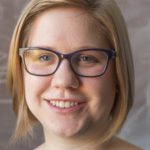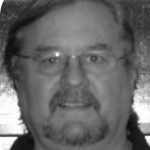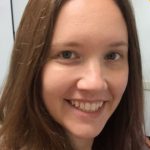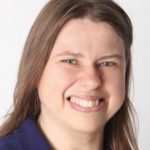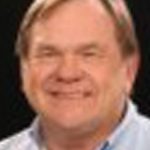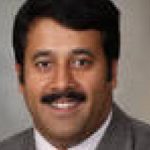Who Inspires You?
Who inspired you to be a statistician? Have you ever had a mentor? We asked some of our members these questions and here is how they responded.
Amelia McNamara
Visiting Assistant Professor in Statistical and Data Sciences
MassMutual Faculty Fellow
Smith College
Twitter: @AmeliaMN
What or who inspired you to be a statistician/data scientist?
I’ve had a nonlinear educational path, but I’ve always been interested in methods of communication. Statistics is really just a way to communicate about data. When I was an undergraduate, I attended one of the Explorations in Statistics Research workshops organized by Deb Nolan and Duncan Temple Lang and was hooked by the way they presented statistics as a problem solving method. Mark Hansen was there, and I was inspired by the artistic ways he was using data.
Name a few specific skills you need to do your job.
As a professor, I need to be able to explain complicated ideas simply and (ideally) in several ways. There’s also a component of time management—it’s easy to pour all my time into teaching, but I also need to be a productive researcher. In terms of practicing statistics, I think computing is one of the most important skills, as well as a strong helping of critical thinking. You can usually iterate to a solution if you know how to try something, consider whether it makes sense, and edit accordingly.
What is the most exciting part of your job?
I love being able to expose students to the excitement of statistics and data analysis. I also weirdly enjoy debugging R code, and I get plenty of opportunities to do that as my students work on projects or my colleagues come to me with questions. Finally, I love exposing things in data that I hadn’t thought of before. As Tukey said, “The greatest value of a picture is when it forces us to notice what we never expected to see.”
Have you ever had a mentor? If so, what role did mentoring play in your career?
My strongest mentor is Chad Higdon-Topaz, an applied mathematician at my alma mater, Macalester. He has helped me through all the major life milestones I’ve encountered in the past 10 years. He got me interested in math as a way to reason about the world, introduced me to original research, advised me on my undergraduate capstone project, helped me apply to graduate school and pick a program, talked me through problems I had in graduate school many times, read my job applications when I was applying to faculty positions, and helped me decide between offers and negotiate with institutions.
Have you ever mentored anyone? If so, what did you learn?
Since I’m just starting out, I haven’t had much opportunity to act as a mentor. However, it is very satisfying to hear from students who enjoyed my classes or got into great opportunities I wrote recommendation letters for.
What advice would you give to young statisticians just beginning their careers?
Find data that inspires you. The easiest way to learn tools (statistical, computational, or physical) is to be motivated by questions you want to answer. Statisticians typically do not generate data, which can be both a strength and a weakness. A strength because it allows us to be flexible and work in many problem areas, but a weakness because sometimes we can get divorced from reality. If you have a passion for a certain type of data, that will help guide you.
Why did you join the ASA, and why have you stayed a member?
I joined in graduate school and have enjoyed all the publications. I’m a member of the Statistical Graphics, Statistical Computing, and Statistical Education sections and appreciate the interesting conversation on the email lists. I’m also subscribed to Amstat News, CHANCE, and Significance and love looking through for interesting perspectives—one particular favorite is the article “I know I’m right!” from the August 2013 issue of Significance.
What do you enjoy doing in your spare time?
I read a lot of fiction. Some authors I love are Haruki Murakami, Neil Gaiman, and Zadie Smith. I’ve also been a dancer my entire life, starting with classical ballet training at age 3. By now, I’ve tried almost every dance style you can imagine, although my favorite is hip hop.
Name one or two favorite blogs or books you have read and would recommend to others.
I read Simply Statistics and FlowingData to keep on top of the statistics and data viz world. I’m also a huge fan of the Not So Standard Deviations podcast by Roger Peng and Hilary Parker.
Greg Matthews
Assistant Professor, Department of Mathematics and Statistics
Loyola University Chicago Twitter: @statsinthewild
What or who inspired you to be a statistician/data scientist?
“This isn’t the life I chose, rather the life that chose me.” ~ Jay-Z
I remember being a kid, maybe 9 years old, and collecting weather data by hand in notebooks three times a day: before school, after school, before bed. Temperature data, barometric pressure, what the clouds looked like, etc. So I guess I’ve always been excited about data.
In high school, I always liked math and I knew I wanted to do something with it as a career. When I started college, I was an actuarial science major, though I quickly realized that wasn’t the career path that was right for me. Toward the end of my undergraduate years at WPI (Worcester Polytechnic Institute), I was lucky enough to get to do my major qualifying project (known at WPI as the MQP) on ranking sports teams and players using a Bradley-Terry model. That’s really when I fell in love with statistics, thanks to professors like Carlos Morales, Jayson Wilbur, and Andrew Swift. This led me to spend two more years pursuing an MS in applied statistics at WPI.
Name a few specific skills you need to do your job?
Being able to write code is absolutely critical. I write code almost every single day. I prefer R, but Python is also a very useful language for statistical analysis.
I once told my high-school English teacher I didn’t need to know how to write well because I was just going to do math for a living. That is a leading contender for “dumbest thing teenage Greg ever said.” Being able to write and communicate coherently is a skill that everyone absolutely needs in any field, and it’s particularly important in academia.
What is the most exciting part of your job?
This is a difficult question because this job that I currently have is more or less my dream job. I absolutely love it.
I really enjoy waking up every day and exploring questions I find interesting. I get to decide what projects I work on, and I love that about my job. It’s also very exciting when a student I have taught gets a job.
Have you ever had a mentor? If so, what role did mentoring play in your career?
Yes. I would say I have had a mentor at every level of my career. When I was a master’s student, Jayson Wilbur helped me a lot about deciding on my future and what my options were. When I spent two years in industry at Brookstone doing predictive analytics, I worked with a statistician, Peter Cook, who was highly influential in my development as a professional statistician. Then, when I returned to do my PhD, my adviser, Ofer Harel, helped me every step of the way, from pursuing my PhD, doing my post-doc, and as I started my career as a professor. We still regularly talk about the next steps in my career, and I can’t ever thank him enough.
Have you ever mentored anyone? If so, what did you learn?
I don’t think I have ever officially mentored anyone, but I suppose some of the people who I consider mentors of mine may not have viewed themselves in those terms either … so maybe?
What advice would you give to young statisticians just beginning their careers?
Learn to write code in as many languages as possible (R, Python, SAS, etc.). Practice writing. A good way to practice writing is to start a blog. Write about whatever you think is interesting.
Why did you join the ASA, and why have you stayed a member?
I joined and have stayed a member of the ASA because I support their mission. I enjoy access to the ASA’s magazines such as CHANCE and Significance.
What do you enjoy doing in your spare time?
I’ve been making digital/data art for the past three or four years, and since moving to Chicago, I’ve been able to show my art all around the city. Also, this year with JSM in Chicago, I am organizing a data art show for JSM that hopefully becomes a regular tradition.
I also like writing on my blog and, within the past year, I’ve started taking improv classes at the Second City Theater.
Name one or two favorite blogs or books you have read and would recommend to others.
I love Andrew Gelman’s blog. I also read StatsByLopez regularly.
Books:
The Lady Tasting Tea: How Statistics Revolutionized Science in the Twentieth Century, by David Salsburg
The Sabermetric Revolution: Assessing the Growth of Analytics in Baseball, by Ben Baumer and Andrew Zimbalist.
Mike Mout
Program Director, State Farm Insurance (retired)
What or who inspired you to be a statistician/analyst?
I graduated from UCSD (University of California at San Diego) with a BA in math in 1970 and after a short, unsuccessful job hunt, I decided to pursue graduate work in applied mathematics. I was accepted into the University of Arkansas (Go, Razorbacks!). When I arrived there in the fall, I discovered the applied math courses were only offered every other year; however, they had just started a master’s degree in stats, so I did that.
The head of the stats department (and only stats guy) was James Dunn. He left for temporary sabbatical at Stanford my second year and put me in charge of the stats consulting office. That experience and working with Jim inspired me to continue in a stats career.
Name a few specific skills you needed to do your job?
The primary skill is common sense. The ability to see what relations make sense in a project. The initial design of the analysis is crucial. Does the data collection make sense, and will it achieve the project goals?
The ability to learn to quickly see how variables interact in a new area to which analysis will be conducted. Of course, you need to know how to run and interpret analyses, but the key is knowing whether the results make sense and helping the client, whether internal or external, understand the results.
I don’t know how many times I have seen results that are nonsense because the person running the analysis didn’t look at the results with an eye to what the results mean from a practical or business point of view. More often than not, results that don’t make sense are a strong indication of bad data and bad analysis. Just remember, GIGO (Garbage In, Garbage Out).
The key to avoiding this common mistake is to slog through the initial data. Too many new statisticians want to start the analysis as soon as they get a data set. EDA (exploratory data analysis) is a bore, but it is crucial. Look at the basic distributions of each variable, review the relationship with any target variables (in modeling situations). I’m not talking about data cleansing here (which is crucial). EDA should be done on clean data. This step and subject matter expertise will help identify potential new variables that add explanatory power to the final results.
Which brings up a second crucial skill. Data manipulation and data cleansing. Again, one of the more boring areas of statistics, but also a skill every new statistician has to do.
What was the most exciting part of your job?
Toward the end of my career, I was working as an independent reviewer (IR). In this role, I oversaw the development of a number of models and analyses. It allowed me to be involved in the interesting parts of the analysis, without having to do any of the “scut work,” and being involved in what I consider the exciting part of the analysis. Helping with:
- Initial development of designing the analysis and data collection
- Identifying new data sources or data transformations that had the potential to improve the results
Looking at the results:
- Helping understand where improvements could be made
- Discovering serious flaws before they are incorporated into the final product
- Helping the developer deliver and explain the final product and how that product would help them in their business goals
Have you ever had a mentor? If so, what role did mentoring play in your career?
I never really had a stats mentor. In my early years, I was the primary and only statistician. I did have a more experienced coworker who helped me a lot in presentations and interacting with clients.
Have you ever mentored anyone? If so, what did you learn?
As a manager, I had a number of subordinates who I helped in their model development skills and their presentation skills. It is surprising how important presentation is; getting team members out in front of clients is one of the best ways to get them recognized and promoted. Actually doing the analytical work is much less important to management than demonstrating how that work improves the business.
What advice would you give to young statisticians just beginning their careers?
Resign yourself to a year or two of cleaning up data. This is something that has to be done, and if it is done well, you will be a better analyst because you will learn to “know” your data. Let your data “talk to you.”
Learn how to present analytical results so they can be understood by non-stats/non-quants. Just about any new statistician can run analytical tools and get results. The real challenge is to interpret those results and make them meaningful to the client.
- Be comfortable in interactions with superiors.
- Be honest. If the results don’t meet the goals of the analysis, don’t try to sugar coat it with misleading charts and graphs. In fact, stay away from fancy visual displays (3D pie charts are one of the worst). Read How to Lie with Statistics for examples of bad graphics. It’s an oldie, but a goodie.
Why did you join the ASA, and why have you stayed a member?
When I joined, one of the benefits was receiving copies of JASA, which was often critical for learning new analytical techniques. By the ’90s, I had a bookcase full of JASA hard copies. With the internet, this is not nearly as important. Another benefit that has stayed relevant over time is monthly meetings with local statisticians.
What do you enjoy doing in your spare time?
Yard work and travel. I also belong to a local sports car club, and I enjoy occasional autocross and club drives.
Name one or two favorite blogs or books you have read and would recommend to others.
As mentioned above, How to Lie with Statistics. Also, blogs on novel ways to display data.
Kim Love
Owner and Lead Collaborator
K. R. Love Quantitative Consulting and Collaboration
What or who inspired you to be a statistician/data scientist?
As a new undergraduate, I thought I wanted to be a psychologist. When I started taking courses toward that end, I found out it wasn’t quite as good a fit for me as I had imagined. In the process, though, I took an introductory statistics course and realized it was a great fit for me. I loved the idea of being able to design a study, collect information, and analyze it to solve a real problem, and it all went from there.
Name a few specific skills you need to do your job?
The ability to communicate at varying levels is probably the number-one skill that is specific to my job, relative to the wider field of statistics. Many of my clients are unfamiliar with statistical thinking and need simple explanations of complicated concepts. Next, management (including business management, budget management, and time management) was probably the skill set that presented the largest hurdle for me, because I sort of fell into it with no previous preparation at all. Of course, technical and methodological skills in statistics are a given.
What is the most exciting part of your job?
I started my own private practice this past January after five and a half years in a nontenure-track faculty position, and the most exciting part of my job right now is watching everything come together. It’s very encouraging to find that many of my skills from the academic environment transferred directly to my private practice. I also love the opportunity to become involved in a new community; it has provided me with new energy to keep contributing to that community and to my clients.
Have you ever had a mentor? If so, what role did mentoring play in your career?
Yes! I have had two mentors who have been instrumental in my career. I was very fortunate to have Chris Franklin (just named the first ASA K–12 Statistical Ambassador) down the hall from me at my former institution. As a longtime leader in statistics education, she provided me with an outstanding model for how nontenure-track faculty can grow to have an extensive impact on the national statistics community.
I was also introduced to Doug Zahn (Zahn & Associates) a few years ago, and he was and continues to be extremely generous with his time. He gave me a new perspective on communication and collaboration—not just with clients, but with my students and colleagues as well. I learned from him how to evaluate and improve my own collaborative abilities.
Have you ever mentored anyone? If so, what did you learn?
Yes. I have participated in the CSP Mentoring Program twice, which gave me some brief interactions with up-and-coming statisticians. Additionally, as the associate director of the consulting center at my former institution, I also mentored my students on a regular basis to help them become collaborative statisticians in their own right. While I hope to have many more mentoring experiences, I think there are two things I have learned that I can share now:
- I usually learn at least as much from those experiences as my mentees.
- Mentoring is not about handing out rules and the “right” way of doing things—mentoring is about sharing experiences and being available to others as they find paths to their own goals.
What advice would you give to young statisticians just beginning their careers?
Do be realistic about your career, but don’t be afraid to make big moves. I am glad I did not try to start my own practice immediately after finishing my degree, because I personally didn’t have the experience, skills, or resources to do what I do now. On the other hand, any career transition typically comes with a sense of anxiety or hesitancy, and it’s hard to know when it’s the right time.
I would suggest that anyone hoping to work in a particular area or type of position talk to other statisticians who do what they want to do, attend workshops and presentations in that area, and learn what skills and resources are necessary on a regular basis. Evaluate your situation realistically, and when you are ready, go for it!
Why did you join the ASA, and why have you stayed a member?
I joined the ASA as a graduate student in statistics at Virginia Tech, which was strongly encouraged by the department. I stayed a member because the ASA has been a great resource for staying in touch with a larger community of statisticians. Through conferences and other member activities, I have connected with colleagues across the U.S. and Canada whom I likely would not have met through other venues. I’ve taken advantage of conferences like JSM and CSP to present my work, and also served the consulting community through participation in the executive committee of the ASA’s Statistical Consulting Section. Even though I am currently working for myself as a private consultant, I have an extensive network of statisticians to whom I am connected through the ASA.
What do you enjoy doing in your spare time?
I haven’t had much spare time in recent months, but I do try to find time to participate in extracurricular activities related to my statistical practice. For example, in addition to the ASA activities I already mentioned, I became a first-time reader for the AP Statistics exam this year. Beyond that, it has always been important to me to make time for my family (dog included) and close friends. As much as I love what I do, everyone needs the occasional break so they can come back refreshed.
Name one or two favorite blogs or books you have read and would recommend to others.
One blog with a concept I really enjoy is overseen by Karen Grace-Martin. The blog is very general and often written by guest authors with varying areas of expertise; entries are very readable and helpful to folks looking to deepen their understanding of specific concepts, extend their programming abilities, etc. As for books, I will name an old favorite: How to Lie with Statistics by Darrell Huff. For those not familiar with this classic, the point of the book is to help readers understand the deceptive ways data can be gathered and presented, intentionally or through carelessness. It serves as a reminder to me that my work as a statistical collaborator is not done in a vacuum, and that there are real and sometimes extensive implications of the work I do, whether for one individual (my client) or many (the larger research community and its beneficiaries).
Irene B. Helenowski
Biostatistician
Northwestern University Department of Preventive Medicine
Twitter: @Orderofthedimen
What or who inspired you to be a statistician/data scientist?
From the time I was in high school, I was interested in biomedical research, particularly in the data analysis part. Then in college, I took my first statistics class and absolutely loved it; it was there that I learned about the need for biostatisticians and how they can help other investigators in the medical field.
Name a few specific skills you need to do your job.
I have done a lot with mixed effects models, survival analysis, and meta-analysis. I am also doing research with multiple imputation, which was the basis of my imputation.
What is the most exciting part of your job?
Coming up with a methodology that can make the investigator happy and answer his or her question.
Have you ever had a mentor? If so, what role did mentoring play in your career?
I have been very fortunate to have had many mentors throughout my career, including Michael Newton, Christina Kendziorski, Jason Fine, and Brian Yandell from when I was pursuing my MS from the University of Wisconsin; Hakan Demirtas, Sally Freels, and Don Hedeker when I was at the University of Illinois – Chicago for my doctorate; and of course, many wonderful colleagues where I work at Northwestern, including Alfred Rademaker, Borko Jovanovic, and Joan Chmiel.
Have you ever mentored anyone? If so, what did you learn?
I have volunteered with Project Exploration, a Chicago-based organization to help encourage interest in the sciences among minority youths. Particularly, I have given presentations involving statistical topics at Frederick Funston grade school here in Chicago to 5th- through 8th-grade girls as part of their Sisters 4 Science program. I have learned a lot from my experience from the girls arising from questions they have regarding my daily activities.
What advice would you give to young statisticians just beginning their careers?
Be open to new topics and keep learning on the job. And most of all, to not be afraid to ask questions whenever you need help or whenever you think you can see a unique solution to a problem that an investigator might have.
Why did you join the ASA, and why have you stayed a member?
I was interested in attending the Joint Statistical Meetings after completing my master’s in Wisconsin and joined when registering. I definitely have benefitted from remaining a member since then and look for the ASA as a resource in finding information on other meetings, the current whereabouts of prominent statisticians and news about their latest work, and ideas on how to spread awareness of statistics among the general public.
What do you enjoy doing in your spare time?
I enjoy writing, in fact, and have written an Order of the Dimensions trilogy related to the multiverse theory where the characters live vastly different lives, depending on the dimension they live in. It’s funny because I began writing it to do something unrelated to my field, but the more I developed the story, the more I found that principles of theoretical physics can also be intertwined with elements of statistics. I’m also writing some poetry and a series of fairy tales.
Name one or two favorite blogs or books you have read and would recommend to others.
I have recently read and truly liked Dennis Higgins’ Pennies from Across the Veil. It’s a work of fiction about a young couple where the wife becomes diagnosed with cancer. Working in the field, I was especially drawn to the story and led me all the more to hope for finding ways in which my work can help those affected by this disease and their loved ones in the future.
Since beginning to write, I have also networked with some incredible authors, including Sophie Bowns, Joe Pranaitis, Margaux Sky, Marilyn Tomlins, and Kelli Landon.
Aubrey Dale Magoun
Professor Emeritus, University of Louisiana
Owner of the consulting firm Applied Research and Analysis, Inc.
What or who inspired you to be a statistician/data scientist?
Lonnie Bennett, my undergraduate mentor at the University of Louisiana in Monroe.
Name a few specific skills you need to do your job?
Full knowledge of SAS, JMP, and SPSS, as well as knowledge of MS-Access and other databases.
What is the most exciting part of your job?
Learning from data. The role of the statistician is to let the data lead the researcher to the meaning and not let the biased interpretation influence the analysis of the data.
Have you ever mentored anyone? If so, what did you learn?
Yes, I have had many doctoral-level students in pharmacy in which I have mentored and assisted in their dissertation research. As a statistician, you get to learn much about the other fields.
What advice would you give to young statisticians just beginning their careers?
I like to tell my students that statistics is very much like the “CSI” of data science. We follow the clues, which the data provides us.
Why did you join the ASA, and why have you stayed a member?
I was invited to join by Lonnie Bennett and have enjoyed the learning experience the ASA has to offer.
What do you enjoy doing in your spare time?
Playing bridge, golfing, and touring our great nation and our immediate neighbors: Canada, the adjacent islands, and Mexico.
Name one or two favorite blogs or books you have read and would recommend to others.
I would go back and read the writings of Sir R. A. Fisher. His knowledge was vast and newcomers to our profession could learn a great deal from him.
Jay Mandrekar
Professor of Biostatistics and Neurology, Department of Health Sciences Research
Director, Biostatistics Core, Mayo Clinic
What or who inspired you to be a statistician/data scientist?
Applied projects as part of biostatistics coursework during my master’s/PhD program.
Name a few specific skills you need to do your job?
Collaboration, communication skills, teamwork, multi-tasking, time management, and willingness to work under tight deadlines.
What is the most exciting part of your job?
Being part of research that has direct impact on patient and health care.
Have you ever had a mentor? If so, what role did mentoring play in your career?
[I had] many mentors within and outside of institution, starting with my advisers in my master’s and PhD programs. Mentoring helped me keep focused and work hard toward my goals.
Have you ever mentored anyone? If so, what did you learn?
I have been a formal and informal mentor to statisticians and clinical residents/fellows. It taught me how to motivate others and help them achieve success.
What advice would you give to young statisticians just beginning their careers?
Attend statistical meetings, present and network whenever you can. Take advantage of mentoring resources offered.
Why did you join the ASA, and why have you stayed a member?
Opportunity to network and keep up to date with the latest research, particularly application of statistics to the field of medicine/health care.
What do you enjoy doing in your spare time?
Traveling, reading health and fitness magazines, listening to music.

